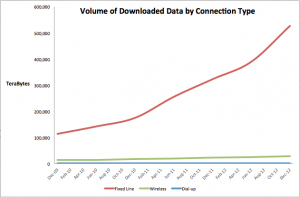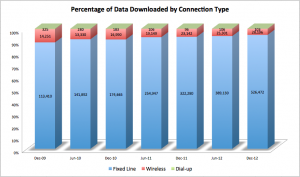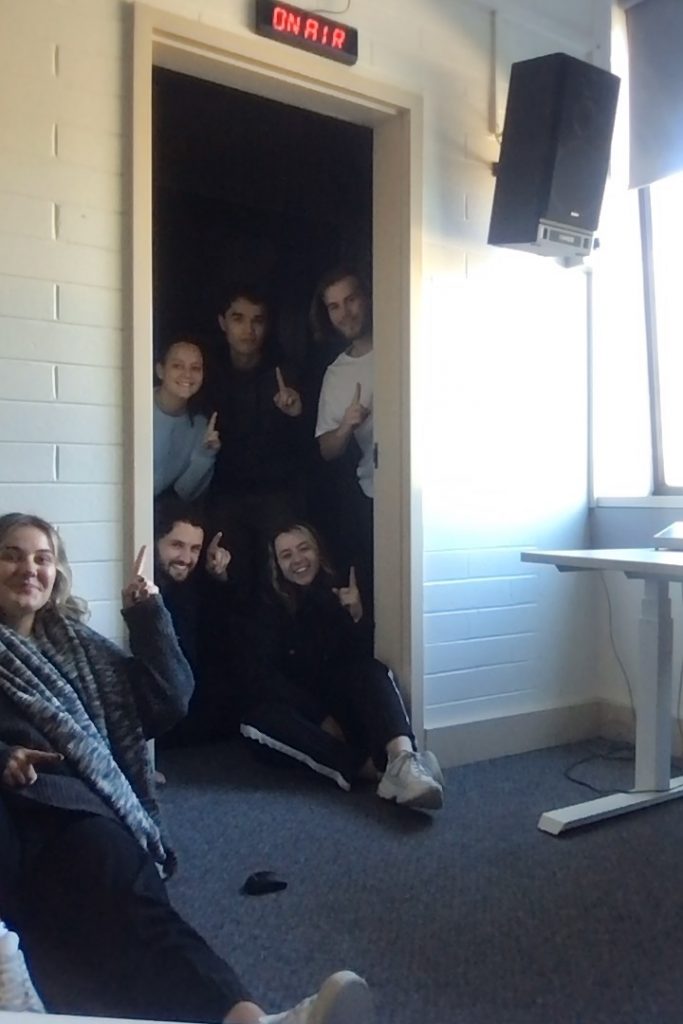Australian Data Downloads
The Coalition this week has released their alternative policy proposal for the National Broadband Network (NBN). Shadow Communications Leader Malcolm Turnbull has announced the Fibre to Node (FTTN) plan, as opposed to Labor’s Fibre to Home (FTTH) scheme.
The main differences between the two, and a point that has been drilled home in press conferences this week, the Coalitions plan will be faster and cheaper to roll out. While the FTTH connects a fibre-optic cable from the local network directly to your door, the FTTN network relies on existing copper networks to transport data the final step. Where Coalition’s plan will offer speeds of 25-100 mbs, Labor claims it’s NBN will support 100+ mbps.
I guess the real question is, do Australian’s need those kinds of download speeds?
This graph demonstrates the clear increase in data downloads over the past three years. Downloads by fixed line (DSL, Cable, Fibre) today are five times what they were in 2009. Wireless (Satellite, Fixed Wireless, Mobile) has seen a steady increase, while Dial-up slowly dies.
The percentage of data volume held by fixed line connections grows significantly each year. Considering current trends of growth, fixed line data downloads will double again in the next 3 years.
Australian’s are obviously using more downloads in their day-to-day lives. Schools and workplaces are moving towards a technological approach. Considering these boosts, it seems necessary to gain the highest speed of download possible to facilitate not just for the now, but for the future.






Be the first to comment!